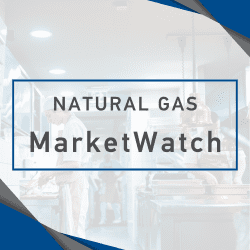Recap: The crude market traded lower on Tuesday as a stronger dollar weighed on demand, while the OPEC+ decision to pause its output increases in the first quarter of next year could signal the group’s concern about a potential oversupply. The dollar increased to a new four-month high amid doubt about the prospect of another rate cut this year. Also, stock indexes fell to over one-week lows on Tuesday following warnings of a market selloff from Morgan Stanley and Goldman Sachs. The oil market opened at a high of $61.03 and began to erase its previous gains, trading to a low of $59.94. However, the market bounced off its low and retraced some of its losses and settled in a sideways trading range ahead of the close. The December WTI contract settled down 49 cents at $60.56 and the January Brent contract settled down 45 cents at $64.44. The product markets ended the session higher, with the heating oil market settling up 3.93 cents at $2.4446 and the RB market settling up 67 points at $1.9228.
Technical Analysis: The oil market is seen trending sideways ahead of the release of the weekly petroleum stocks reports, which are expected to show small builds in crude stocks and draws in product stocks. It will likely weigh the inventory reports and the concerns of a supply glut. The market is seen finding resistance at $61.03, $61.50, $62.17 and $62.59. Meanwhile, support is seen at $59.94, $59.64, $59.28, $58.49 and $57.34.
Fundamental News: According to a Reuters survey, OPEC’s oil output increased further in October following an OPEC+ agreement to raise production. OPEC produced 28.43 million bpd in October, up 30,000 bpd from September’s total, with Saudi Arabia and Iraq making the largest increases. Saudi Arabia’s output increased by 50,000 bpd to 9.9 million bpd and Iraq’s output increased by 500,000 bpd to 4.06 million bpd.
HSBC said OPEC+ is focused on regaining market share and the bank expects oil output quota increases to accelerate in the second and third quarters of 2026. The bank said the first-quarter pause in OPEC+ output increases “signals caution about seasonally weaker demand, but no change in strategy”.
Market sources said Iraq has cancelled the loading of three crude oil cargoes from Lukoil in November, citing concerns over U.S. and UK sanctions on the Russian oil major.
IIR Energy said U.S. oil refiners are expected to shut in about 803,000 bpd of capacity in the week ending November 7th, increasing available refining capacity by 178,000 bpd. Offline capacity is expected to fall to 499,000 bpd in the week ending November 14th.
Bloomberg reported that a number of Indian refiners are returning to their traditional suppliers. During the past week, four Indian processors that used to take more than half of India’s imports of Russian oil have said they’ll stop all purchases due to US and European Union restrictions. It is a big shortfall that will need to be replaced with new term contracts and spot-market supplies, mainly from the Middle East, but also from Africa, the U.S. and Canada. Other Indian refiners are considering whether they can continue to take some discounted Russian oil by leaning on smaller, unsanctioned suppliers. However, the work required to sort out the necessary paperwork with those sellers and their bankers could take some time. Reliance Industries Ltd.’s purchase of more than 10 million barrels from the spot market last month shows there is no shortage of crude in the market. However Bloomberg reported that those buyers looking to continue buying Russian crude will need more long-term contract supplies from the likes of Saudi Aramco next year, which will cost more than what they are used to paying for Russian oil.
Early Market Call – as of 8:35 AM EDT
WTI – Dec $60.29, down 14 cents
RBOB – Dec $1.9124, down 89 points
HO – Dec $2.4595, up 1.22 cents










